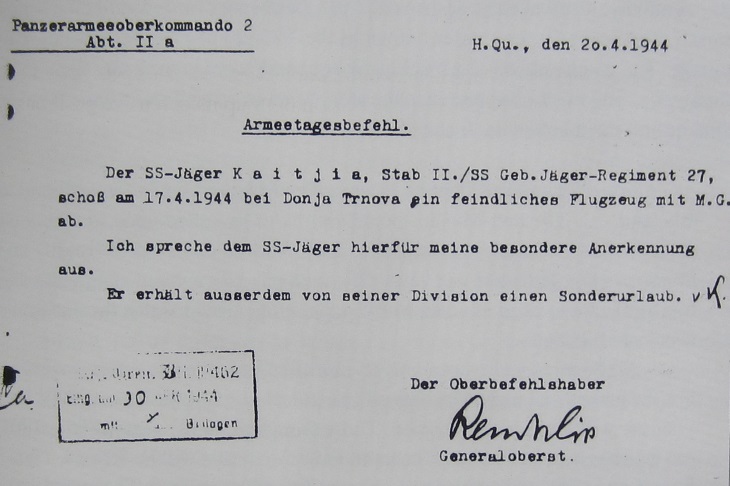
20.IV.1944 – a certain SS-Jager Kaitjia (unusual name, perhaps misspelling) was the subject of a commendation by General Rendulic (2nd Panzer Army) for having shot down an enemy plane with his machinegun.
Zvonimir Bernwald, acting as a translator was called up in a similar case (around the same time) though he does not share additional details.
“With an MG42 we had managed to shoot down a hostile “Lightning” fighter (twin engined P38) and things were quiet for an hour. The pilots of these aircraft often had fun flying low and exploring the terrain below. Sometimes it was possible to read the writing on their fuselages. Therefore it was sometimes possible to shoot down with an MG. In May 1944, an American fighter plane was shot down in such a fashion. I was brought forward as an interpreter. I was amazed at the equipment that the airman carried. Above all else I was amazed at the maps that were found on him. The pilot was turned over to the gendarmes of the Luftwaffe.”
-Zvonimir Bernwald
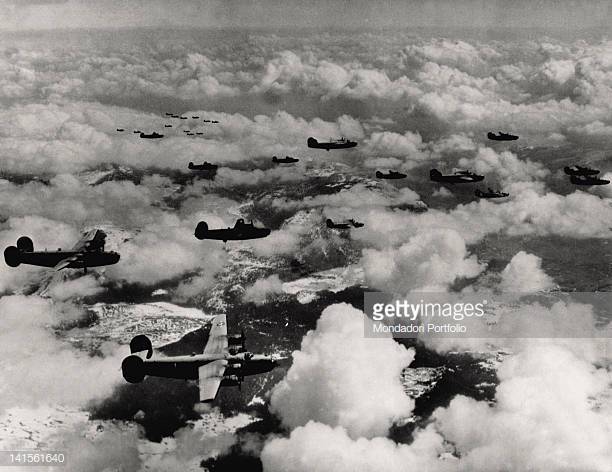
B24s of the US 15th Air Force over Bosnia April 1944 (flying from Foggia, Italy to Axis positions behind the eastern front in Hungary).
*5 other American airmen were turned over to the Gendarmes that spring, though most seem to have been rescued by the partisans. Flak Abt. 13 had by this point shot down 59 allied planes (though perhaps in a different sector) but surprisingly very few airmen were recovered. Axis airpower consisted mainly of Stuka ground support, but no large scale bombings by Heinkels to speak off (footage of Heinkels in support of anti-partisan operations exists for 1943 however). Likewise German fighters seem to have been reserved for front line service too. Allied and Soviet planes consisted of B24s, P38s and IL-2s according to some sources.
Flak Abteilung 13 – Handschar’s air defense
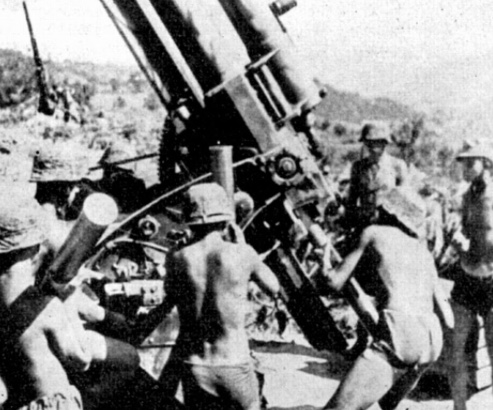
The battalion first saw action in the area of operations normally assigned to the 7th SS Division (Capljina, Mostar area). Its batteries also manned positions in Tuzla and Bijeljina (before March 1944). With the expansion of the IX SS-Mountain Corps the detachment was re-designated as SS-Corps-Flak Det. 509. Only its 2cm batteries remained with the Handschar division, which were used to augment the Panzer Jager Abt. Around this time frame Det. 509 saw service on the eastern front. In about November the detachment was supporting SS-Police Kampfgruppe Dorner on the bridge-heads at Vukovar and Opatovici (also Vinkovci behind the line). Its larger caliber guns (88s) were used more and more in a ground anti-tank role, though 10 planes were brought down in this time frame. Following this, the detachment rejoined the Handschar division on the line south of Lake Balaton in Hungary. Its 88s once again assisted in the ground role at places like Nagykanisza and Kaposvar. In mid March 1945, the detachment 509/Flak Abt 13 kept the rail line at Nagykansiza open. On the retreat to the Reich, the 3,7cm battery moved into positions east of Marburg, while the 8,8cm battery had to struggle on its way back to the Drava line before settling in the Pettau-Friedau region, where it experienced no air activity for the remainder of the war.
Unternehmen Maibaum 23.-27.IV. 1944 (WW2’s largest anti-partisan sweep)
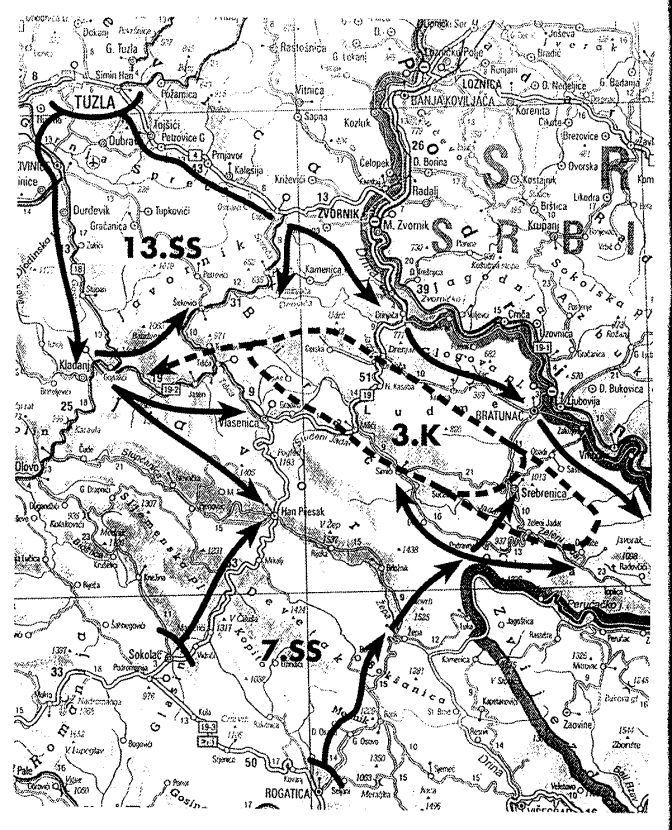 (“3.K” stands for the 3rd partisan corps) Op. Maibaum succeeded in preventing the 16th and 17th divisions from crossing into Serbia.
(“3.K” stands for the 3rd partisan corps) Op. Maibaum succeeded in preventing the 16th and 17th divisions from crossing into Serbia.
1. May – 16th Vojv. Div. totally defeated east of the Drinjaca (near Srebrenica) by units of the 7th SS. Stukas continue to pound them in their retreat
1.-5. May – Kladanj, the Feldgendarmes hold out against elements of the 16th which routs the local police/militia.
6. May – German airstrikes against the 17th (partisan) div. at Zunovi.
The partisan high command recommends fighting in the woods rather than holding out in the villages which are easily cut off from retreat.
German broadcasts announce victories in the Sudost by “German” Divisions. The names of the fighters are listed as Estonians, Latvians, Flemish and even Cossacks, much to the disapproval of the Croats/Bosnians.
14. May – Partisan communiques are compromised and their codes cracked.
15.-16. May – elements of the 16th Vojv. destroy lengths of railroads of the Tuzla-Doboj line, otherwise in retreat.
SS units begin patrolling the security zone in higher frequency. Partisans attempts at infiltration are frustrated further. The partisans are noticing that the tactics of the jagdkommando units sent out against them are similar to their own and therefore very effective.
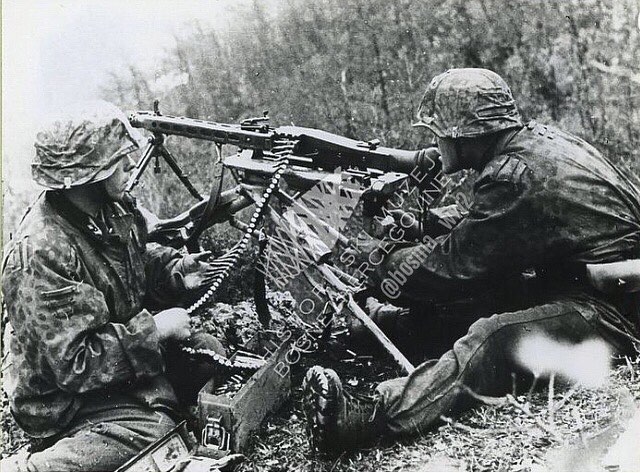
17. May – 4th batt./16. Vojv. is repelled, both the 36th and the 16th give up hopes of taking back the Majevica mountain range.
20. May – HQ at the 38th Div vows to “expell the SS” out of the Majevicas.
Late May 1944 – Semberija and Majevica cetniks now begin collaboration with the Germans. Allied planes continue air drops to the partisans, this time S of the Majevica mountains. The II/16 receives one Bren gun with 1,500rds. It is likely that same LMG would be put to use in the upcoming partisan offensive. One would assume it was given to an experienced gunner.
6. June – 16th Vojv. holds an inspection to assess readiness
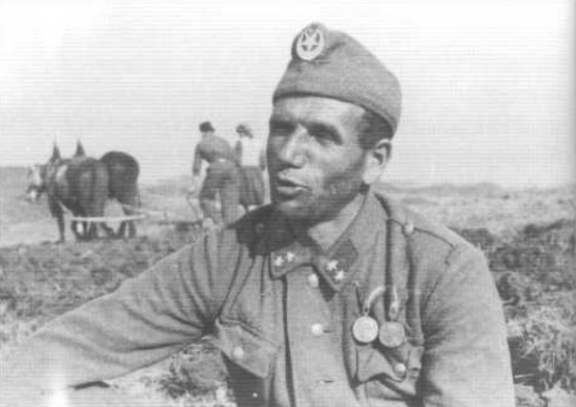
“If you flattened out the mountains of Bosnia you would get a surface the size of Russia.” – an unknown Yugoslav partisan
Battle of Lopare (from the partisan perspective)
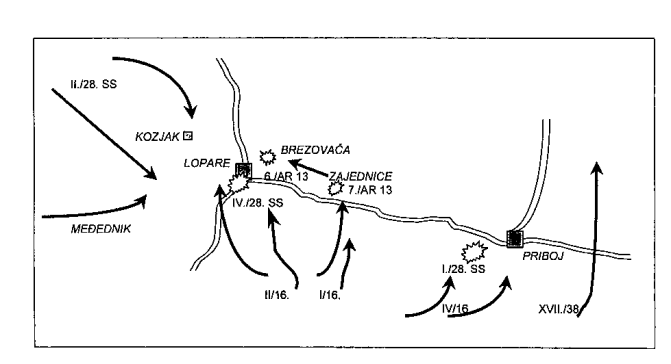
At Lopare – the 1/16 takes the first row of trenches from I/28 while enduring howitzer fire at 500-800m. The closer they get to Zajednice the flatter the 105s have to depress to keep up with them. Red and green tracers are continually darting across the night sky as the German MGs desperately try to keep partisans at bay and away from the guns. There are now Bosnians fighting on both sides of this contest. The XO of the very battalion that took the first row of SS trenches was a Bosnian Muslim who now found himself exchanging shots with the gun crews of 13 AR.
A partisan commissar later recollected:
“I spotted a Kraut under a truck pointing his rifle at me. I yelled at him to come out or I’ll shoot him. He got up, raising his hands in tears, and started begging in Serbian language not to shoot him. He claimed he was Bosnian, that he was conscripted into the army and that he would like to stay with us and fight against the occupiers. After consulting with comrades, we decided to accept this German soldier, a Muslim from the 13th SS Division, into our ranks. We assigned several members of the Party and SKOJ to keep an eye on him. In the battles that followed, he even carried a German machine gun and proved to be a good fighter. However, we were wrong, he took the first opportunity to desert and flee back to the Germans.”
“During our first withdrawal to the starting positions, in all that mess and hand-to-hand combat, I had a mishap. I don’t know how nor when, in all the confusion I lost my commissar bag with confidential political material and lists of fighters […]. Feeling a great responsibility and guilt, I went back to search for it. The comrades tried in vain to hold me back and talk me out of such a crazy idea. Soon I realised that they were right. Only a few hundred metres from our positions, I ran into an enemy rifle squad that took cover. ‘Get him, Mujo!’… ‘Catch him, Alaga!’ – I heard them shout and simultaneously saw several ‘fez-wearers’ jumping out in front of me, trying to catch me alive. I barely managed to escape them, by jumping into a gully, and to return to my comrades again.”
9. June – partisans declare a total victory at Lopare.
10. June – The 2 partisan brigades find themselves under heavy artillery fire as they watch a determined SS counterattack. In the lead is Hans Konig’s 9th Co. (Regt. 28).
11. June SS troops take back Zajednice (11AM) while attacking from the dierction of Pozharnice. Find the guns blown in place. 16th Vojv. disengages and retreats down south.
After action report of the 3rd Bosnian Corps beginning 4 June 44:
38th (central column) succeeds in scattering the cetniks along the Celic road.
36th (right column) advance checked by a battalion of SS Regt 27 with the aid from 13 AR.
16th (left column) is repelled and thrown out of Lopare, SS units take Zajednice, Lopare and Priboj.
Damage report on the German side:
SS I/28 is reduced to 180 men (effective strength). Historian J. Peric now makes the claim that the Handschar division was hobbled by the offensive that it was ever after put on the defensive posture. He claims that the Germans lost 1170 killed in the are around Lopare alone. Nothing was farther from the truth. The inexperienced I/28 was thrown out of its position with stragglers heading north on all roads but makes no mention of the counterattack by II/28.
*Bernwald estimates the strength of 7./AR 13 at 80 men with 4 guns
Speaking of his service with this regiment, a former artillerymen recollected:
“I was a gunner, during the world war I had fired millions or shells it seems. I did this for three years but never went into combat with a rifle in hand. There were times when we lost our guns and were lucky to escape with our lives.” R.S.
The views of Imam Halim Malkoc – Summer 1944
“It is a sad reality that the number of deserters from our division is not small. Even worse is the fact that these deserters are going into the ranks of our worst enemy, the communists. You imams have to prevent that. You have to be in constant contact with your soldiers and be refreshing their morale. The groundwork of our work and survival is collabotarion with the Germans.” – 6. July.
The famous imam also had some controversial views on the sworn enemy of his countrymen, the chetniks. Views that likely only he shared:
“The Chetniks as a nationalistic element are inherently anti-Bolshevik. In the struggle against Bolschevism we have to use all possible options. We would be committing a criminal act against European culture if we had rejected their support. The condition of the troops and the situation does not look favorable at the first glance. The troops must never have doubts in our ultimate victory, nor lose hope in the leadership.”
There were many who disagreed. For one thing there were many former chetniks who were now serving in the partisans. Their double motives could not be trusted. And if not ironic, or tragic enough, those Bosniaken that did desert/defect to the partisans would be joining an ever increasing population of amnesty seeking domobrans, ustashas and chetniks. Another paradox was the mentality of the men in October of 1944 when the order to move out of Bosnia was given. As far as they were concerned the deal was to fight local partisans not Russians for the safety of the German Reich
A note on the factors influencing Desertions:
*The manpower of the Handschar division was being sapped by many factors in the latter months of the year 1944. The Croat government had become hostile to it and began enticing its members to back out of its ranks. The German alliance with the Chetniks was turning away many of the Muslims and this coupled with Tito’s promise of amnesty gave the men of the Handschar division a means of staying in Bosnia and securing their own villages under a different flag. Likewise the Bosnians saw no sense in leaving their own country to defend the Reich against the Soviets. It must be noted that the faith and the motives of the partisans was shaken during the year too. Around 200 members of the 16th Muslim Bde (partisan) defected to the Handschar division (their total strength was 450).